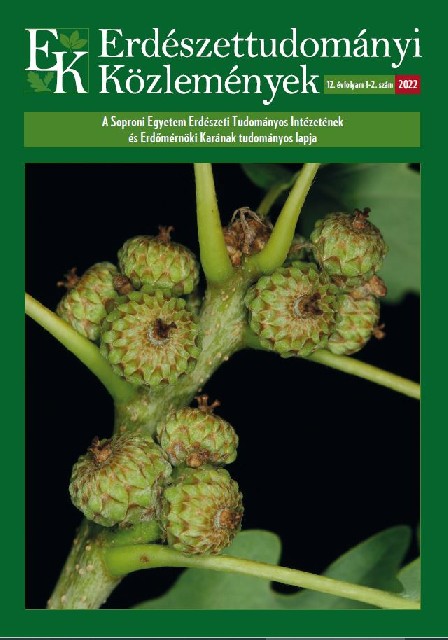Specifying logistics and energy consumption conversion factors related to the carbon footprint analysis of the wood industry processes
Zoltán Kocsis, Gábor Németh, Zoltán Börcsök, András Polgár, Éva Király, Zsófia Kóczán & Attila Borovics
Correspondence
Correspondence: Kocsis Zoltán
Postal address: 9400 Sopron, Bajcsy-Zsilinszky út 4.
e-mail: kocsis.zoltan[at]uni-sopron
Abstract
Climate change is one of the key issues of recent times. One of the main reasons is the increasing amount of greenhouse gases released into the atmosphere, mainly derived from industrial and logistics activities. Carbon dioxide is the most important and also one of the most common greenhouse gases. In order to reduce the effects of climate change, it is therefore necessary to know the places where carbon dioxide is generated, its quantity and its effects on the environment. The aim of the research is to specify the conversion factors for determining the carbon footprint of wood industry processes, and then to develop a uniformly applicable calculation methodology. During the literature research, the carbon dioxide emissions from road transport and the electricity and heat consumption of wood industry companies were examined, and then the conversion factors that characterize them were given in terms of carbon dioxide equivalent (CO2e). The presented methodology can be adapted for practice and contributes to the systematic and scientific determination of companies’ carbon dioxide emissions.
Keywords: Carbon dioxide, carbon dioxide equivalent, climate change, carbon footprint, logistics, electrical energy
Open Acces
For non-commercial purposes, let others distribute and copy the article, and include in a collective work, as long as they cite the author(s) and the journal, and provided they do not alter or modify the article.
Cite this article as:
Kocsis, Z., Németh, G., Börcsök, Z., Polgár, A., Király, É., Kóczán, Zs. & Borovics, A. (2022): Specifying logistics and energy consumption conversion factors related to the carbon footprint analysis of the wood industry processes. Bulletin of Forestry Science, 12(1): 57-73. (in Hungarian) DOI: 10.17164/EK.2022.04
Volume 12, Issue 1
Pages: 57-73
First published:
8 February 2023
Related content
1
More articles
by this authors
21
Related content in the Bulletin of Forestry Science*
More articles by this authors in the Bulletin of Forestry Science
* Automatically generated recommendations based on the occurrence of keywords given by authors in the titles and abstracts of other articles. For more detailed search please use the manual search.
